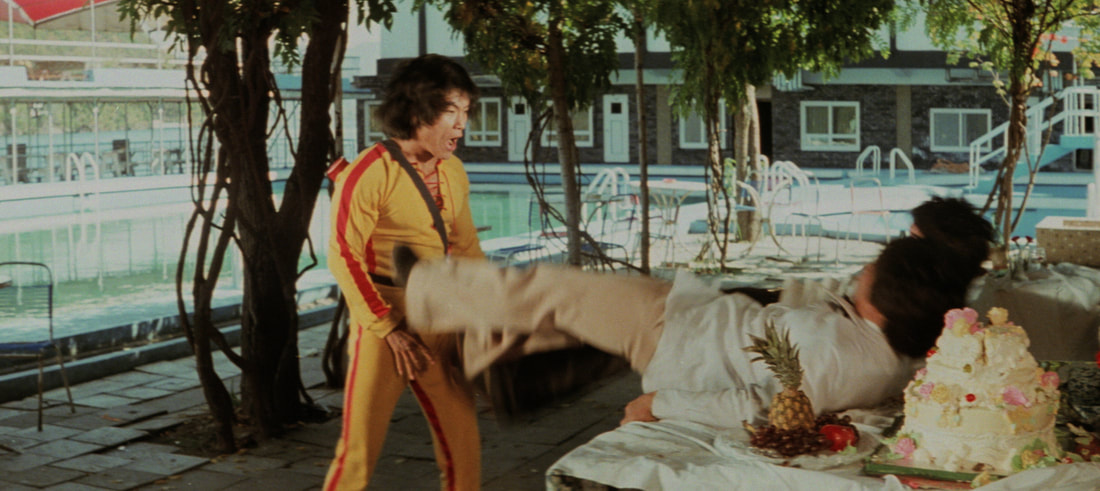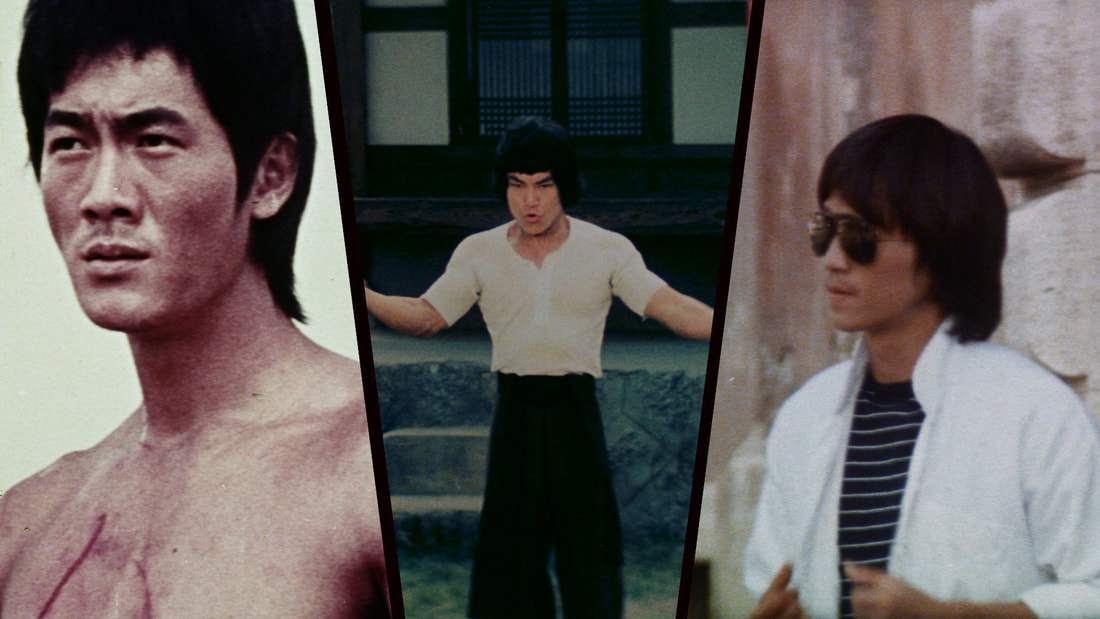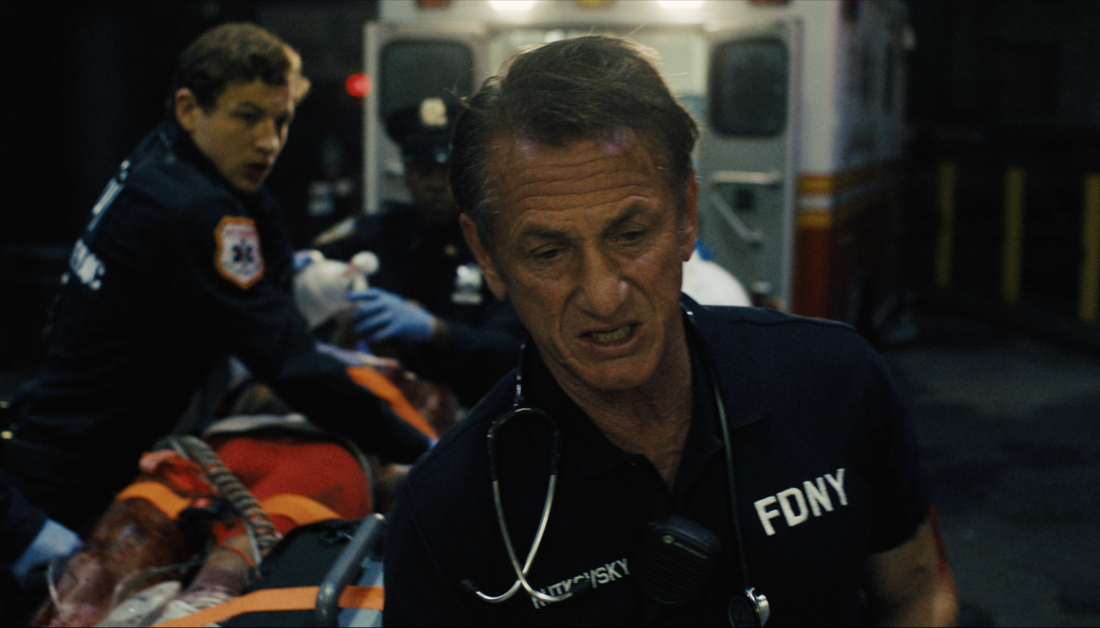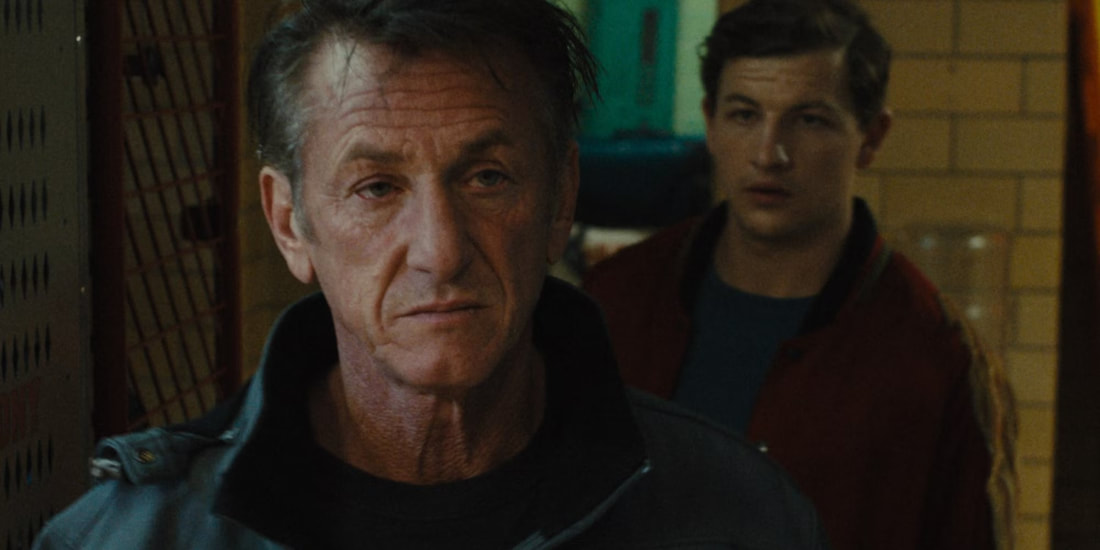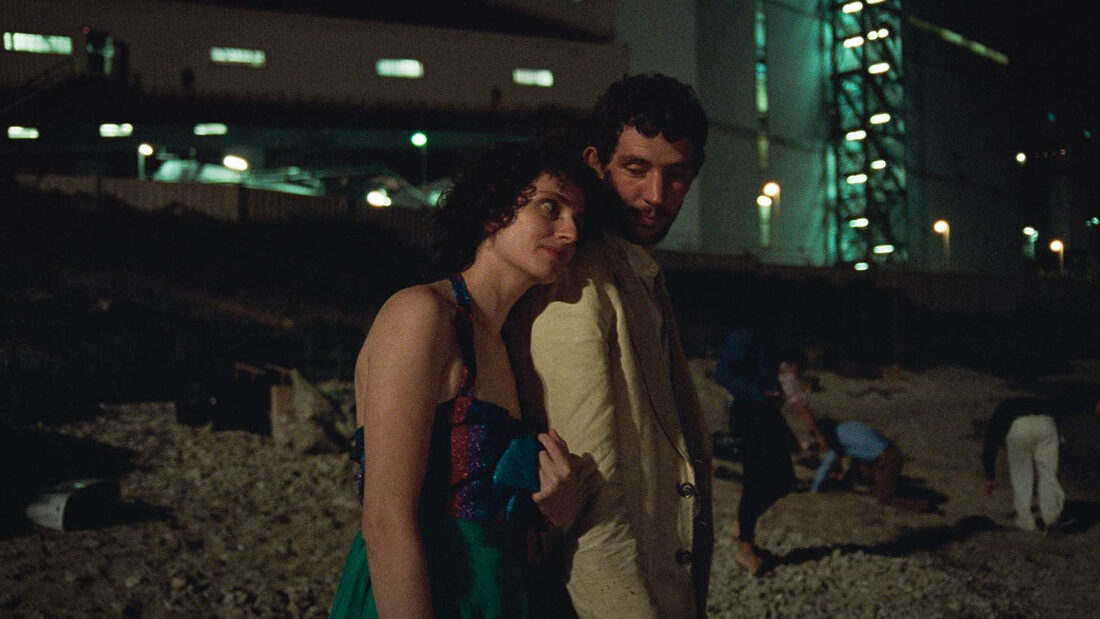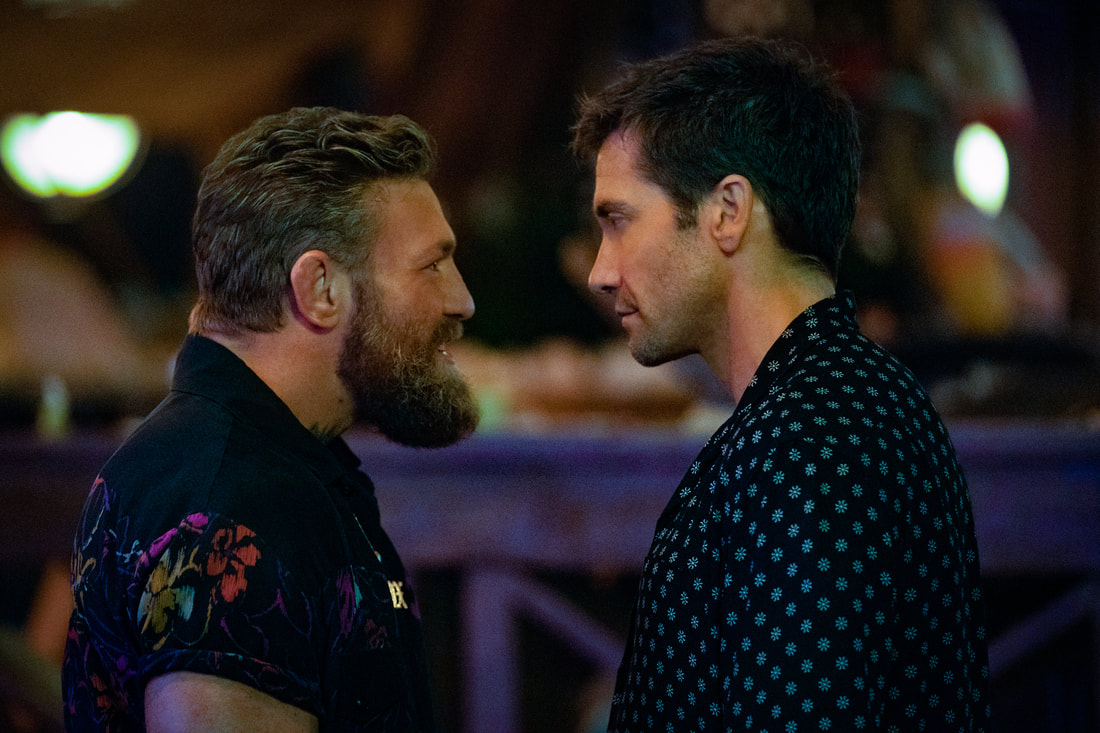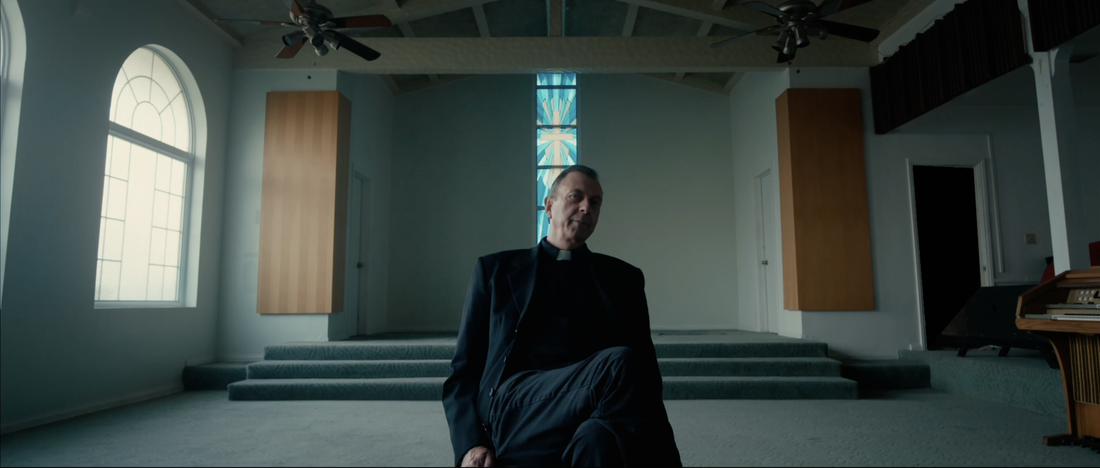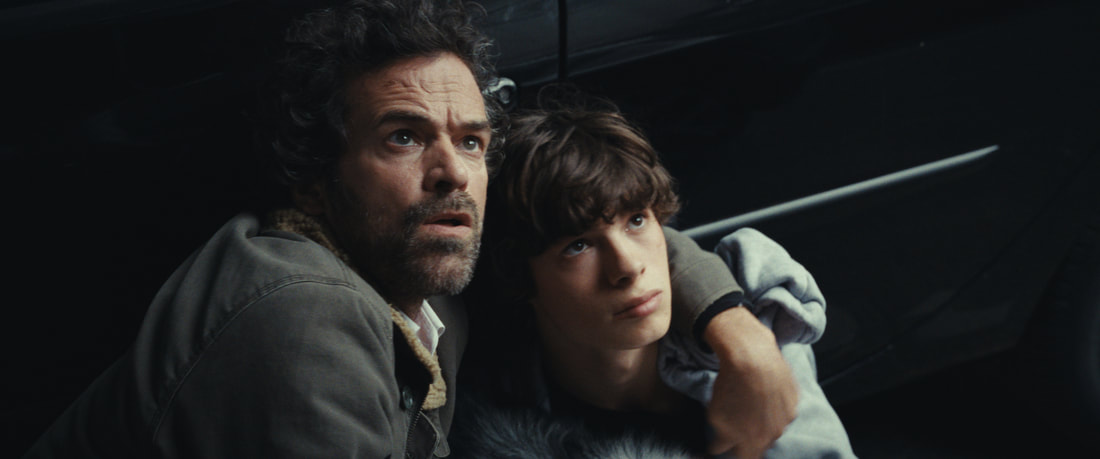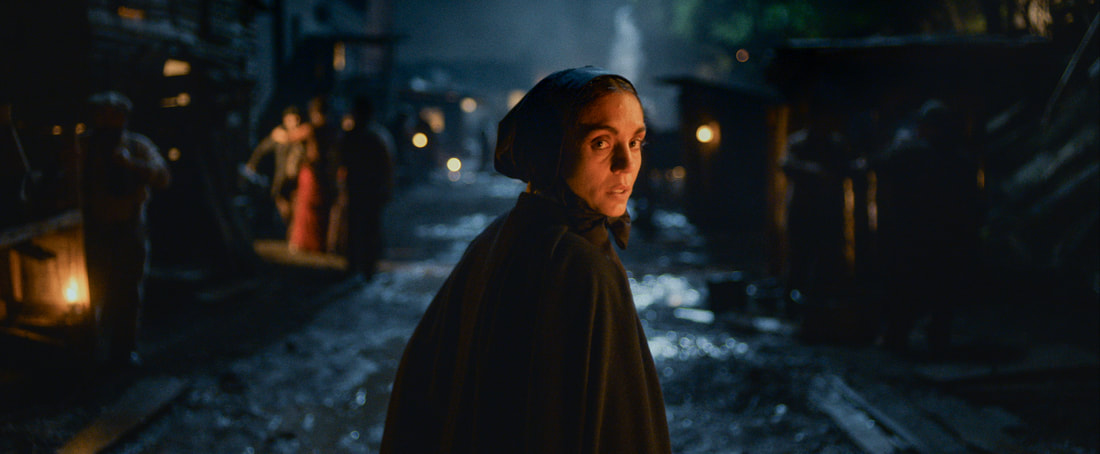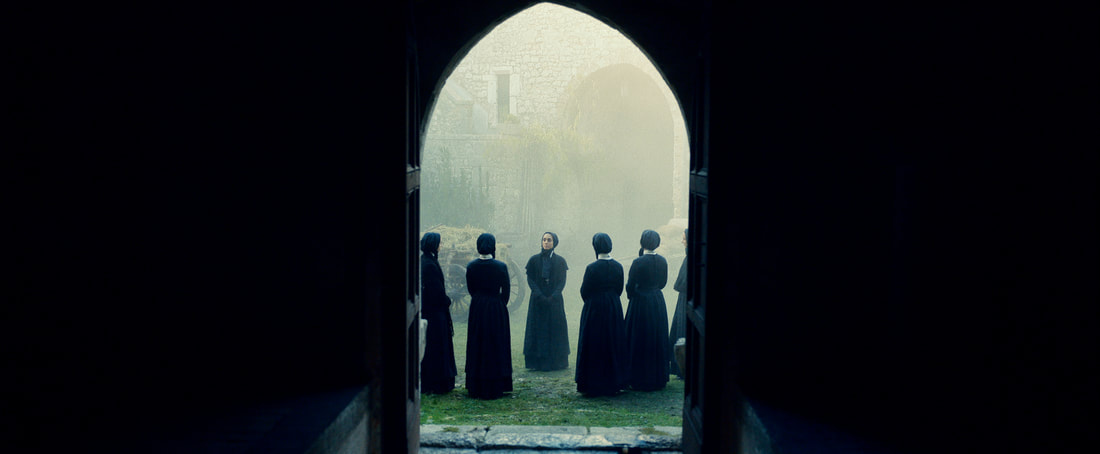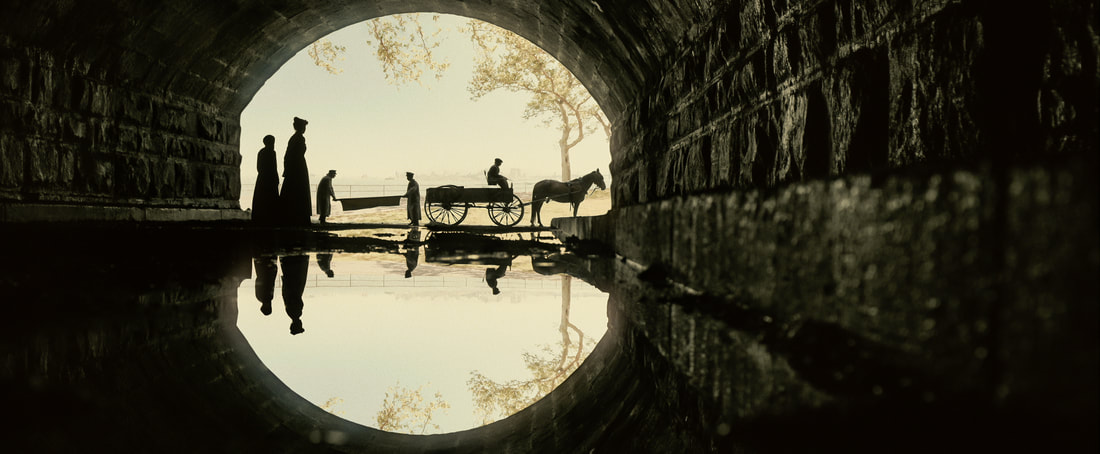|
Review by Daniel Lima Who is your favorite Bruce Lee? For most, that is a beguiling question with only one possible answer: Bruce Lee, aka Lee Jun-fan. Though he starred in only a handful of films before his untimely death, he had an incalculable effect on film and popular culture, turning Hong Kong action cinema and Asian martial arts in general into a worldwide phenomenon and cementing himself as one of the most legendary screen presences of all time. Enter the Clones of Bruce, however, catalogs the other possible answers: Bruce Li, Bruce Le, Bruce Leung, and all the other men and women who stepped up to fill the void left by his passing. It's a comprehensive look at Bruceploitation, one of the most exploitative exploitation subgenres ever, and it has its charms even for those already familiar with the material. The film is a talking head documentary featuring interviews with numerous figures at the center of the ignoble cinematic movement. The various Bruces all get to weigh in on the nature of their stardom alongside a slew of other actors, directors, producers, writers, distributors, and cinephiles. Also featured are clips of the fascinating films being discussed, archival footage of Bruce and his cinematic impersonators, and posters and memorabilia from a time long past. Beyond simply commenting on the films themselves, the doc takes time to situate them in the particular cultural context they existed in and reflect on what they said about the man and the industry that gave rise to them. As ridiculous as these movies are, they are truly being given serious thought here. All cards on the table — I am already a fan of these movies. For years, I've been telling anyone who would listen that Bruce Li made better movies than Bruce Lee, that The Dragon Lives Again was the craziest movie mashup I've seen, that Ng See-yuen was an underrated director and Game of Death II was more important to action cinema history than people gave it credit for. As such, there wasn't a lot of new information to be gleamed for me beyond the personal stories about injuries and conversations had between distributors and the like.
That said, there is something magical about seeing these men and women speak about their experiences. Interesting contrasts are drawn between the various stars and how they approached their roles: Bruce Li never enjoyed being an impersonator, Dragon Lee was somewhat uncomfortable, and Bruce Le was shamelessly enthusiastic. ("You can call me whatever you want, as long as you pay me!") Yet each clearly felt some responsibility in carrying on his legacy; each embodied different aspects of the man; and through their reminisces here, each reveals how their distinct personalities influenced their work. And, of course, any fan of Hong Kong action cinema will cheer when they see the likes of Angela Mao, Godfrey Ho, and Sammo Hung on-screen. Most of the notable and famous — or infamous — films get covered. The biopics, the alternate histories, the investigations into his death, the fanciful, even the recursive ones commenting on the trend they were a part of, every facet of the phenomenon speaks in some way to the man's legacy. Yet, in embodying only a portion of that legacy, they left room for innovation and the incorporation of new ideas, and it is that clash between the imagery they constantly draw from and the incredible new images they birthed that makes these movies so powerful. Enter the Clones of Bruce may be a formally conventional example of documentary filmmaking, but in highlighting the merits of Bruceploitation, however compromised they are, it provides a great service to the art form. Enter the Clones of Bruce hits theaters on April 12 and VOD on April 30. It will also included on the Severin Films box set "The Game of Clones: Bruceploitation Collection Volume 1," which is available beginning May 21. Rating: 3.5/5
0 Comments
Review by Daniel Lima If the powers that be refuse to allow intellectual property to die, if the media franchises of days past must be cyclically brought back and obviate any breathing room for anything new, at the very least, they should be allowed to provide a platform for fresh voices to be heard. Fortunately, that is the case with The First Omen, the debut feature of Arkasha Stevenson. While it cannot escape the gravitational pull of the studio-enforced expectation to mimic the familiar, there is an energy, audacity, and artistry that shows a filmmaker fighting to leave a personal stamp and make something exciting. Set some years before the events of the 1978 original, the film follows a young novitiate, played by Nell Tiger Free, who has recently arrived in Rome. Having spent her entire life in the Church, even growing up in a Catholic orphanage, the bright-eyed young woman prepares to take her vows and serve in an orphanage herself. She quickly finds, however, that things are amiss and that a conspiracy may seek to bring unfathomable evil into the world. The original film series is, quite infamously, about the birth and life of the Antichrist. This film is a prequel, as the many visual and textual allusions make clear. Yet the script is structured as a mystery, with Free's innocent nun growing more frayed and manic as she circles closer to the truth. Considering none of the other movies — even the first — make any real attempt to subvert or misdirect the viewer, it is strange that what any reasonable person would assume was the basic premise of a prequel is positioned as a twist. Whatever The First Omen does right, it does without any sense of intrigue. And there is plenty that it does get right. The opening scene perfectly evokes the sense of dread and constant threat of infernal violence that runs through the first movie, even embracing the visual language of Donner's work: methodical long takes, slow zooms from far-off distances, heightening the sense of powerlessness of the characters in the current of biblical forces. The rest of the film follows suit, employing visual and dynamic lighting to nail the feel of a film out of time, to the point that I am convinced that parts of this were actually shot on celluloid. If not, it's an exquisite facsimile, almost certainly a testament to Stevenson's past as a photojournalist.
It's a rote story, particularly in the expository scenes, yet it never feels like a chore. This is due in large part to the ensemble — an impressive array of established character actors give life to roles that don't have much to them as written. From Sônia Braga's effortless aura of authority to Ralph Ineson's nervous paranoia (an intoxicating presence coupled with his booming voice), each character feels wholly self-possessed, with an entire history behind them. In particular, Nell Tiger Free turns in one of the best performances of the year so far, utterly committed physically and emotionally to the turmoil and anguish of a young woman struggling against infernal machinations. Most laudable is Stevenson's command of the craft within the horror set pieces. It is clear that she has a fondness for the genre, particularly with grisly body horror. There are a number of shameless visual references to landmark films — most notably Possession — that would come across as lazy were they not so seamlessly incorporated into the narrative and so expertly realized. There is such care in how sound reverberates through each space, the rhythm of each space, how much the audience sees and how much they do not, that these go beyond simple homage. This is an announcement of a new talent capable of delivering genuinely disturbing and disgusting imagery, the likes of which are sure to delight anyone with a genuine appreciation of the art. As invigorating as those scenes are and as accomplished as the film is as a whole, it is unfortunate that The First Omen ends on a reminder of the limitations of a project like this. At the end of the day, this is an attempt to keep corporate property alive within the popular consciousness, and so there is a natural ceiling to how far filmmakers are allowed to push things. Stevenson does her best to work within those confines, pushing things to the very brink of what would be allowed under such conservative boundaries, but ultimately cannot go any further. It's a sour note to bow out to, but hopefully, this is merely the first entry in a prolific career. The First Omen arrives in theaters April 4. Rating: 3.5/5 Review by Daniel Lima It's a rare thing for a modern film set in an urban environment to evoke the gritty, lived-in feel of decades past. This is as much an indication of how the world has changed, with city centers rapidly gentrifying and pricing out working-class residents, as it is a testament to how this brand of filmmaking has gone out of fashion. Asphalt City strikes that note like nails on a chalkboard, abrasive and unpleasant, and impossible to ignore. It is a galvanizing, engrossing work... up to the point that it isn't. Tye Sheridan plays a young EMT in Brooklyn, working the overnight shift as he prepares for a medical school entrance exam. Human misery and pain become his everyday reality, and as he struggles to perform his duties, he finds himself beginning to lose his grip on right and wrong. The film presents a cynical, misanthropic vision of the world, where suffering is a constant, and the momentary reprieves only come from laughing through that suffering. A constant barrage of horrific scenes of domestic abuse, violent confrontations, physical illness, and death make up the majority of the runtime, each as taxing on the audience as it is on Sheridan's increasingly frayed newbie. Nights are filled with the screams of people and sirens, the stench of blood, sweat, and filth, and any effort to make a difference is met with indifference, contempt, and a gnawing sense of futility. This can make for an alienating watch, as the film offers little insight in staring into this abyss beyond merely making clear the depths it can reach. However, The lengths it takes to present this jaundiced worldview are truly impressive. The sound design cultivates a constantly busy and frenetic atmosphere where too much is happening at all times. Beautifully textured, high-contrast cinematography captures the city in all its ignoble glory, painting a portrait of urban life as desperate and harried as anything from the '70s and '80s. The editing reflects Sheridan's mental state, which is tense and always holding the promise of an explosive outburst. Whatever its narrative failings, Asphalt City never fails to be gripping. And it certainly has narrative failings. While the craft does an impressive job of bringing the audience into Sheridan's head, there isn't enough to the character to make his deteriorating sense of self feel particularly tragic. Similarly, while every single performance is incredibly natural and does much to give the film a sense of realism, the characters themselves never go beyond an archetype. This is especially notable for the women; while Mike Tyson gets to be the hard-nosed chief, and Sean Penn gets to play the grizzled veteran, the women are relegated to being defined solely by the men in their lives. Then, of course, is the interesting fact that just about every Black or brown character in the film is portrayed in a thoroughly negative light: violent, verbally abusive, ungrateful, dirty, disheveled, and nasty in every way one could imagine.
It could be argued that this is a consequence of seeing the world from the perspective of a young man who increasingly cannot help but see the world in the worst possible light. Beyond that, it could merely be the result of seeing these people in their worst moments, as they find themselves completely helpless and at the mercy of strangers. Even if this was actually director Jean-Stéphane Sauvaire's perspective, is there something to be said about getting this unadulterated, unsanitized vision of ugliness? Those arguments may hold sway if it were not for the note on which Asphalt City ends. After such an unflinching and uncompromising trek through urban grime, the film ultimately leaves out the possibility of hope, serenity, and change. The manner in which this is done feels disingenuous and artificial, giving everything that came before it a similarly fabricated air that undermines everything it did right. It's hard not to wonder if this ending was mandated in the face of producers nervous about the film's reception. If so, the wrong call was made. It's better to wallow in that muck than pretend it's a swimming pool. Asphalt City arrives in theaters March 29. Rating: 3.5/5 Review by Daniel Lima The reverence with which we hold the past, or the lack thereof, reflects who we are as individuals and as a society. As ineffable as La Chimera is, this is ultimately its central thesis, encompassing everything from the cultural history upon which our world is built to the personal joys and tragedies that carve grand reliefs onto our souls. As vexing as this exploration is, it’s hard not to give in to its rhythmic charms. The film follows an Englishman, haunted by a relationship that left him heartbroken, returning to the small rural Italian village his former beau once called home. Curmudgeonly and standoffish, he slowly falls in with his old band of rogues, employing his knack for finding Etruscan tombs to help them steal artifacts for the black market. As simple as his life may seem, there is a growing sense that meddling with the shrines of the dead may carry consequences, material or not. La Chimera lacks a clear narrative structure and takes its time to build out its small ecosystem. The grave robbers have a cavalier attitude about their activities, thinking of themselves almost as modern folk heroes. The intricate system by which they smuggle their wares sees them dealing with powerful figures to the point they never actually meet. The Englishman spends much time with his ex’s elderly grandmother, a singing instructor in a worn-down home who takes on a tone-dead student as a live-in maid. She engages in a flirtation with him, which he seemingly is incapable of properly reciprocating. These complicated relationships form the bulk of the film, and they are all beautifully captured on film, as warm and worn as the memories that plague the lonely people that populate the village. With no great urgency or even sense of importance, director Alice Rohrwacher is content in allowing the audience to sit in these moments with the characters, from gaudy celebrations to profane pilfering, and simply absorb the ambiance. Even on this superficial level, the film is a pleasant watch, hypnotizing in its idyllic portrait of the Italian countryside.
It is inevitable, however, that our nominal hero is forced to confront the reality of what he is doing. When he does, the division between the real and the fantastic begins to blur, and the heart of the film takes shape. La Chimera operates as a plea to respect the lives that have come before — the experiences that shape us all — without dwelling within those moments in perpetuity. Whether wading through a watery grave or clinging to love long lost, attempts to commodify or root oneself in the past are portrayed as grotesque acts that impede our ability to connect with the present. It is in living within the present moment, enshrining the past, and moving beyond it to build towards a better future that we can find true meaning and belonging. All that said, La Chimera is a vexing film by design. It is possible to come away from it with more cynical interpretations; I myself have some difficulty squaring the note that it ends on with the rest of the film, as it seems almost unconscionably cruel. Yet it’s a film that I would not be surprised to see grow in my own estimation the longer I sit with it. For now, I am satisfied in calling it uniquely ephemeral, contemplative, and engrossing. La Chimera arrives in theaters March 29. Rating: 3.5/5 Review by Daniel Lima If you make an action movie, you highlight the action. If you make a comedy, you try to make the audience laugh. It is a shame, then, that so many filmmakers set out to make movies about animals and then sideline those creatures in favor of human drama. Such is the case with A Cat’s Life, the American dub of the French film Mon chat et moi, la grande aventure de Rroû. Though the scenes rooted in nonhuman perspectives are an absolute delight, anthropocentric instincts limit how much the film can actually achieve. An adaptation of the 1931 novel Rroû, the film divides its attention between a young Parisian girl and a kitten she finds in her apartment’s attic, whom she names Lou. As Lou grows into adulthood and chafes at his restrained domestic life, the girl finds herself acclimating to her own changing circumstances. Eventually, the film ends. The film ambles along at an easy pace, unconcerned with adhering to a traditional narrative structure that would necessitate narrative momentum. The family goes on a trip to their house in the country; they spend time with the reclusive old woman who lives next to it; the cat enjoys exploring the woods. Each new detail comes and goes without any jeopardy or tension. It’s all presented as just a part of growing up. This lack of any sense of importance undermines the emotional journey of the young girl, as it is hard to care about her as a person when the film seems to take her trials and tribulations no more seriously than the antics of a young kitten. To make matters worse is the ludicrously bad dubbing, completely obliterating any sense of drama or intentional comedy in every scene with the human characters. It’s unclear why the American distributors thought this blaring, cartoonish, completely artificial voice acting over what appears to be a grounded slice-of-life story was preferable to making kids read subtitles, but it was absolutely the wrong approach. It is certainly unintentionally funny when a woman bluntly explains to her confused daughter that divorce just means that two people don’t love each other anymore, but that doesn’t make the rest of the tortured line readings any less painful.
What makes the human-centric focus even more aggravating is all the scenes without them are absolutely delightful. Rather than rely on narration, voiceover performances, or CGI creatures, the filmmakers utilize real animals and good old-fashioned visual storytelling to show the world from Lou the cat’s perspective. Each of the various animals is given distinct personalities, from the star’s unending mischievousness and curiosity to Rambo the dog’s lazy, slovenly nature. The camera stays low to the ground, offering a feline perspective of the world. Scenes of Lou inquisitively exploring new spaces, forming new bonds, solving problems, and making grand escapes are all wonderfully conveyed through precise editing that lends him autonomy without simply anthropomorphizing him. It’s a marvel to watch unfold, particularly for anyone who has ever tried to make a cat do anything on command. It’s a shame that Lou cedes so much time to unwieldy and unconvincing human drama. One might expect that the girl’s coming-of-age narrative might neatly mirror the cat’s, yet such a parallel eludes A Cat’s Life. While it doesn’t seem that there’s an English translation of the original novel or even information on the book in English, it seems that it is entirely about the cat, with no human POV to speak of. One cannot help but wish the film was a more direct adaptation. A Cat's Life is now in theaters. Rating: 3/5 Review by Daniel Lima There’s something to be said about the power of art as communication, a universal language that allows one to convey complex and intimate experiences to others. In the case of The Fox, that is the experience of telling a deeply personal story to yourself, only to realize that it lacks any structure, meaningful insight, and ultimately anything of interest to anyone without a personal relationship with it. Which is to say, a bad one. The film is based on the life of director Adrian Goiginger’s great-grandfather. Born in the mountains of Austria, he was given away to a farmer at a young age, and upon reaching adulthood, he joined the army after his country was willingly incorporated into Nazi Germany. A withdrawn, introverted man, his only friend was a small fox he raised for about a year. He served through World War II and eventually left military service. That’s it. That’s the movie. It is interesting, to the point of suspicion, how carefully Goiginger portrays the Austrian forces, as well as his great-grandfather’s participation in the Nazi cause. We never actually see the devastation that the Axis powers visit upon Europe; there is no conversation about the culpability of the Austrian people to Nazi crimes. Most curiously, nothing is made of the protagonist’s voluntary enlistment and service as a dutiful soldier within the Nazi war machine. We don’t even see him handle a weapon; conveniently, he was the one front-line soldier who managed to keep his hands clean. That, or everything condemnable is within the significant gaps of time the narrative skips over. The director claims he deliberately wanted to avoid making a war film, instead focusing on his ancestor’s personal journey. This is, frankly, a dishonest approach to telling his story, which falls neatly in line with a tendency to ignore uncomfortable truths about the past. Neo-Nazism and other far-right ideologies have a strong foothold in Austria, and historical revisionism surrounding the country’s participation in prosecuting the Second World War was official government policy until a few decades ago. In this context, Goiginger chose to sandblast away the most unpleasant parts of his great-grandfather’s life. As the war passes out of living memory, it is important to question the ethics behind such a choice. At the very least, it would have provided a sorely needed contour to the man. That the excuse for this is a desire to delve into his progenitor’s internal life is laughable, considering how little there is as written. He is defined solely by his inability to be defined: he cannot relate to others, has no goals or desires, and displays no outward personality. Lead actor Simon Morze fails to imbue the character with any humanity, but given that he has so little to work with, that’s hardly surprising. It is possible to center a story on such a repressed, socially inept protagonist.
Still, there has to be something for an audience to cling to: a sense of character development, an approach to film craft that externalizes how they relate to the world, even simply using them as a lens through which to examine the world around them. Instead, the character is static, the film’s handsome cinematography does nothing more than look handsome, and we certainly gain no perspective on wartime Europe because that might lead to some tough questions about dear old great-grandpa. Thus, the film places all dramatic weight on a void that cannot support it. One might assume that the soldier’s relationship with the titular creature would serve as the emotional foundation of the story. Frustratingly, nothing is done to emphasize their bond beyond a handful of scenes where they frolic, sandwiched between all his other ambling wartime experiences. The fox is given no distinct personality; his growth into adulthood is skipped over, and he doesn’t even receive a proper name. Their dynamic does not change until the very end of the movie, and even then, it does not actually serve as the final leg of what passes for the soldier’s journey. Instead, that is offloaded onto his relationship with his father — a figure absent from his life for over a decade and the narrative for almost the entire runtime. It’s a baffling decision that speaks to difficulty finding a clear arc to a real life — at least, one that ignores all the Nazi bits. It is, of course, possible that the filmmaker is actually doing the story of his great-grandfather justice. Perhaps his service through World War II as part of the Axis powers really was entirely bloodless. Maybe he really had no dimension to his as a young man. Perhaps he really didn’t bother to name this animal that served as his only companion for a year. If all this is true, however, it begs one question: “Would anyone who isn’t a blood relative of this guy actually care?” There is only one answer. The Fox is now available on VOD. Rating: 2/5 Review by Daniel Lima It might come as a surprise to learn that the 1987 film Road House was once widely considered mediocre at best, as it has in the decades since become a quintessential part of the '80s movie canon. I must admit that as someone who saw it for the first time last week, I just thought it was okay. Doug Liman's contemporary reimagining boasts some of the same charms of the original while making some of the same mistakes and even finds room for some new boons and banes along the way. The Dalton of 2024 is an ex-UFC fighter — a friendly but withdrawn man brought out of a depressive stupor by a job offer as a bar bouncer. He travels to the Florida Keys, quickly ingratiating himself in the tight-knit community, but soon learns that powerful interests are committed to making sure his job is not an easy one. The greatest strength of the original film was its atmosphere and how it cast its small Midwest town as a modern-day outpost in the American frontier. Colorful performances gave life to eccentric and unique characters; every set carried with it the feeling of decades of wear and tear and love; even the music played in the bar evoked the feeling of a time since passed. Though it leaned heavily on Western iconography and tropes, that movie still felt wholly self-possessed. Liman's remake is a mixed bag. Though it is set in the tropical Keys, an idiosyncratic microcosm of the already idiosyncratic state of Florida, the visual language does not convey the sticky heat and humidity, the loud and kitschy buildings built to attract tourists, the Latin influence found throughout the state. Instead, the film takes on that familiar made-for-streaming sheen: a muted color palette, shots that get everything important in the frame and nothing more, a general lack of personality. The change in setting is welcome, but the filmmaking does not capitalize on it. Where it does succeed is in its ensemble. Though the inhabitants of Glass Key lack the same amount of attention paid to the townsfolk of Jasper, the cast does a great job imbuing them with a healthy dose of charm despite clunky dialogue. Minor supporting players Hannah Lanier's precocious young girl and Arturo Castro's reflexively good-natured henchman give the film a distinct flavor it desperately needs, with reliable turns from the likes of Daniela Melchior, Billy Magnussen, and Joaquim de Almeida, except Jessica Williams, who gives the impression of someone who read the script for the first time before every scene.
Two performances in particular stand out even among these. Conor McGregor makes his acting debut here and gives one of the most exhilarating performances of the year. Unsurprisingly, he is just as forceful a presence within a fictional narrative as he is in real life; the only issue is that he's not in the movie enough. For his part, Jake Gyllenhaal plays Dalton with the humility and softness that makes him every bit a delight to spend time with, doing a much better job engendering audience goodwill than Swayze in the original. When the action ramps up this time, you actually care about this guy. The plot follows the first Road House closely, with a handful of deviations accounting for the more personable disposition of Gyllenhall's interpretation of Dalton. The one significant change is in how the action is executed. Over the past couple of years, a new style of fight scene has arisen that employs long, robotic arm-controlled takes, in which the camera shifts from position to position with some CG assistance to smooth things over. On the one hand, it is slightly more dynamic than the workmanlike slugfests of the first movie. On the other hand, it gives the fights an artificial feel that undercuts their impact, and the long, medium shots still present the choreography with little energy. It's serviceable, but it's a shame that out of all the movies to carry this name, the 2006 direct-to-video sequel has the best action by far. As disappointing as the action might be, the emotional stakes are much greater simply because spending time with these characters is so enjoyable. Though it deviates from its predecessor in some significant — and occasionally detrimental — ways, this contemporary iteration of Road House ends up being every bit as enjoyable. Road House arrives on Amazon Prime Video on March 21. Rating: 3.5/5 Review by Daniel Lima “Is there a spiritual way to kill an animal?” This is the question that the filmmakers behind Christpiracy: The Spirituality Secret allege that they are seeking an answer to as they investigate the inherent contradiction in religions that condemn murder but condone the killing and eating of animals. That underlying hypocrisy and all the social conditions that are the cause are fascinating subjects to interrogate. Provided, of course, that the people delving into the subject have an earnest curiosity about it and are not prioritizing a self-aggrandizing narrative that precludes an informative and meaningful exploration or even a cohesive rhetorical argument. Kip Anderson and Kameron Waters prioritize such a narrative, quickly discarding informativeness or honesty regarding how religions treat animals in favor of a manufactured purporting to uncover a conspiracy that makes bedfellows of such disparate entities as the Catholic Church, Tyson Foods, and the Indian government. The “film” takes the form of all the post-Michael Moore documentaries that clog up basic cable and streaming services: fast-paced editing incorporating extraneous material from other media, interviews with various officials (in this case, religious authorities and animal rights activists), and — most importantly — the filmmakers as plucky underdogs up against vast and powerful forces out to suppress their discoveries. From the jump, this is the wrong approach to the material. This tack is useful when focusing on the specific misdeeds and crimes of particular people and organizations when there is a defined culprit to be questioned. When applied to complex social and religious practices that at times reflect contradictory values, it is asinine, precluding any meaningful probing of the belief structures that allow such contradictions to flourish. A truly empathetic artist might, for example, wonder what economic or cultural forces make a majority Hindu country a prominent exporter and consumer of beef. Anderson and Waters instead label India a nation of hypocrites and move on. This shallow analysis could be excused if Christpiracy could articulate a coherent, persuasive message that goes beyond calling meat-eating bad that could actually change hearts and minds. That does not happen. Instead, the “film” flits about from topic to topic, never focusing on any target long enough to build an actual rhetorical argument against it. The plot the filmmakers claim to have uncovered is a jumbled mix of biblical interpretations and pseudohistorical claims, the kind of thing that will do nothing for the nonbeliever or the believer. If this film is being made to point out the discrepancy between the teachings of Jesus and the practice of killing animals for food — a discrepancy that a large majority of Christians already are happy to ignore — why would insisting that Jesus was a vegetarian show them the error of their ways? Not only is the case itself unconvincing, but it is also being made available to an audience that doesn’t exist.
The most egregiously annoying thing about this product, however, is how transparently manufactured it all is. Anderson and Waters go to great lengths in aping the investigative documentary style, going as far as to allege that they are being targeted by unknown forces intent on stopping their efforts to find the truth. Putting aside that there is absolutely nothing there that is not already readily available public knowledge, and even taking them at their word that their homes were ransacked by intruders (who deliberately did not break anything expensive) and that they are being followed (as shown by one guy walking on the sidewalk across from them... one), these assertions carry no weight precisely because the work’s aesthetic. In making all the Moore-esque flourishes — colorful infographics, interviews clearly edited together to portray the interviewees in certain lights, the constant “scrappy underdog” posturing — with the clarity of his arguments and targets, the entire project registers as one big fabrication, made to support the filmmakers’ vision of themselves as activists. That they never say anything meaningful, persuasive, or credible matters less than giving off the appearance that they are committed to their cause. Yet the only way they could be any worse as public advocates against eating meat would be if they were munching on KFC on camera. Perhaps Anderson and Waters actually are ideologues who made Christpiracy: The Spirituality Secret in the hopes of moving the needle on public discourse. Maybe they do see themselves as real artists, utilizing the form to its fullest extent to convey their message. In either case, they should be ashamed and embarrassed of what they have created. Intellectually and artistically bankrupt, to call this a documentary, or even a film, is an insult to the medium. Christpiracy finds its way into theaters March 20. Rating: 0.5/5 Review by Daniel Lima The Animal Kingdom finds itself in the curious predicament of being both a strange, off-kilter film compared to most mainstream cinema and operating within a well-defined and old strain of speculative fiction. Though it does not go much further in interrogating the themes it brings up than any of those older works, it remains compelling on the strength of its craft. Set in a world where people have begun mutating into animals, the film follows a father and son who have moved to the south of France to be near the boy's mother as she is being treated. However, when she breaks out and escapes into the local wilderness with other patients, the two rush to find her before the authorities do. All the while, the son finds himself having a more difficult time adjusting to his new environment than he ever would have thought he would. There's no avoiding that the premise of people changing into animal-human hybrids and society attempting to grapple with these changes calls to mind countless other similar works: The Island of Dr. Moreau, Black Hole, X-Men, and Wolf. These disparate stories use the concept to explore themes of mental health, coming-of-age, man's alienation from nature, and the propensity for people to shun and victimize anything they don't understand. To its detriment, The Animal Kingdom elects to incorporate every possible allegory that the conceit allows. To a certain extent, they all work, as evidenced by the fact they've all been employed in the past. The film doesn't choose to focus on any particular dimension afforded by the premise; however, none of these ideas are explored as deeply as they would need to be to stand out as an original take on the material. The film wisely decides to ground these lofty ideas in the relationship between father and son. Paul Kircher, as the son, shows incredible vulnerability in his performance, ably dancing between the ennui and joy endemic to all teenagers. Romain Duris plays the father with barely contained emotion like a man trying desperately to keep things together even as it's clear he's at the end of his rope. Together with a solid supporting cast, they provide the emotional core that a movie like this requires.
That this is such a formally accomplished work goes a long way; there is much beauty in the cinematography, particularly when characters explore the serene wilderness that has become home to the transformed humans. There is an admirable level of control over the film's pace, meeting the fairly predictable story at just the right pace to create tension. This comes to a head in the handful of more energetic set pieces, so harrowing and well-captured that it's easy to wish the film was an action-thriller rather than a drama. Finally, it must be said that the effects work is incredible. The animal-human hybrids are brought to life via both practical and computer-generated effects, ranging from subtle features like a pronounced spine and patches of fur to full-blown fantastic beasts. To my untrained eye, it seems CG work is being layered on top of practical makeup and costuming, with even the completely digital renders being made to resemble a practical effect. All these creatures are a marvel to see, and knowing that this was done on such a meager budget by the standards of American productions puts Hollywood to shame. Ultimately, The Animal Kingdom is a respectable fantasy drama despite its familiar themes. There is a clear vision on display that elevates the film above a script that would otherwise be pat. I'll admit I was totally unaware of director Thomas Cailley, but this announces him to me as someone to keep an eye on. The Animal Kingdom arrives in theaters and on VOD March 15. Rating: 3.5/5 Review by Daniel Lima The problem with many of the faith-based films of the West is the seemingly universal desire to merely reflect the values of their audience rather than give even the barest hint of any challenge to their deeply held beliefs. Nuance in the portrayal of venerated religious figures, interrogation of the righteousness of Christian dogma, and anything that could possibly be construed as questioning the moral fortitude and objective truth that the New Testament provides is prohibited. Unfortunately, these complexities are the stuff of compelling stories, so a film like Angel Studios' Cabrini is left devoid of anything that is even marginally interesting. Frances Xavier Cabrini was a nun who, at the turn of the 20th century, established a mission in New York City to attend to the needs of Italian immigrants. A passionate advocate for the rights of her fellow countrymen, she was very effective in cultivating and organizing aid and establishing schools, orphanages, and even a hospital. Decades after her death, she became the first U.S. citizen to be canonized by the Roman Catholic Church. Reader, you are now freed from the obligation of seeing Cabrini. That description sums up the experience of watching the movie. As impressive as this woman's accomplishments were, particularly considering the discrimination she would face as both a woman and an Italian immigrant herself, she was undoubtedly more than a series of bullet points detailing important moments in her life. Certainly, she must have had doubts, if not in her Christian faith, then in the institution to which she devoted herself. Perhaps she wavered in her dedication to her cause or in her certainty that she could surmount the obstacles in her way. One could imagine that the transition from pastoral Italy to an industrial-age urban slum might have presented a significant readjustment to her daily life or worldview. So many possible avenues exist to explore who she was as a flesh-and-blood person rather than a historical figure or saintly object. This film is uninterested in any of that. Here, she is an uncompromising, static individual, a paragon whose perspective is always both morally superior and entirely practical. She faced no adversity that a well-placed admonishment or impassioned plea could not brush aside; if one scene sees an authority figure set up a roadblock, rest assured it will be dismantled in the next. Doggedly uncomplicated, lacking any inner turmoil, practicing exactly what she preached, she was in life exactly what she is in death: an idol. To be fair, this form of superficial hagiography is a common sight in secular productions, with many such films earning critical and commercial success despite their own dull, bland retread of personal histories. Indeed, Cabrini does not spend much time on its protagonist's Christian faith at all; instead, she focuses on her efforts on behalf of the Italian Americans consigned to the bottom rungs of NYC society. This is more similar to a stodgy, liberal-minded biopic than the proselytizing drivel that makes up most faith-based productions. If anything, that is to the film's detriment. The lack of a meaningful exploration of her religious convictions — a crucial part of who she was — is a glaring omission that calls even more attention to how shallow this depiction of her life and work actually is. That such an exploration does not necessitate a critique of Christianity, or even the Roman Catholic Church, is obviously irrelevant. Anything less than a fawning, perfect portrait of the saint could be deemed an offense to the target audience, so that dramatically rich path is closed off. That's not to say that Cabrini lacks ideology or social messaging. The cursory, surface-level overview of her biography is itself a statement, preserving the events of the film in amber and stymieing any attempt to draw parallels between early 20th-century America and the present day. Specifically, the dire circumstances of Italian Americans at the time could easily be compared to how the West treats immigrants, refugees, and other marginalized groups today. While the closing narration limply gestures towards such a comparison, their plight is otherwise viewed purely through the lens of recounting Cabrini's accomplishments, rooting their struggles in the sociopolitical realities unique to that era. Considering director Alejandro Monteverde is himself a naturalized American citizen, this pointed refusal for a more explicit link to the present is surprising. Considering his previous film for Angel Studios was the Sound of Freedom, which utilized universal revulsion towards sex trafficking and genre conventions as a smokescreen for fringe right-wing politics, this makes sense. In the world of Cabrini, sandblasted of any complexity or nuance or any resembling a critical eye, venerable institutions that actively participate in the subjugation of human beings are not intrinsically rotten, merely slow-moving, in need of shaking up by a passionate individual who is nevertheless a fervent adherent to the established social order. Reform is preferable to revolution, and even then, in its own due time. It's a decidedly conservative vision, made palatable to a mass audience by avoiding overt preaching. That this is the fictional take on a life that seems far more textured in reality is insulting.
Credit where it's due; this is a handsome movie. Though it takes on the same sickly and desaturated hue as other period works, there are some inspired compositions here, often framing Cabrini within geometric shapes that naturally draw the eye towards her diminutive figure. Adding to this effect are the dramatic lighting, detailed costumes, and production design. These are not in service to much, but at least it shows that Monteverde has an eye for these visual details. Hopefully, he one day finds a better showcase for his abilities than the likes of this. Ultimately, Cabrini is a bloodless, banal biopic of a woman who deserved a more intellectually curious and challenging film. Though there is a politically conservative undercurrent, more damning is its artistic conservatism, relegating it to nothing more than a dry rehashing of an eventful life. For those still curious, Frances Xavier Cabrini's Wikipedia article is every bit as insightful and dramatically fulfilling, and that can be read in only a couple of minutes. Cabrini arrives in theaters March 8. Rating: 2/5 |
Archives
July 2024
Authors
All
|
|
|
disappointment media
Dedicated to unique and diverse perspectives on cinema! |

